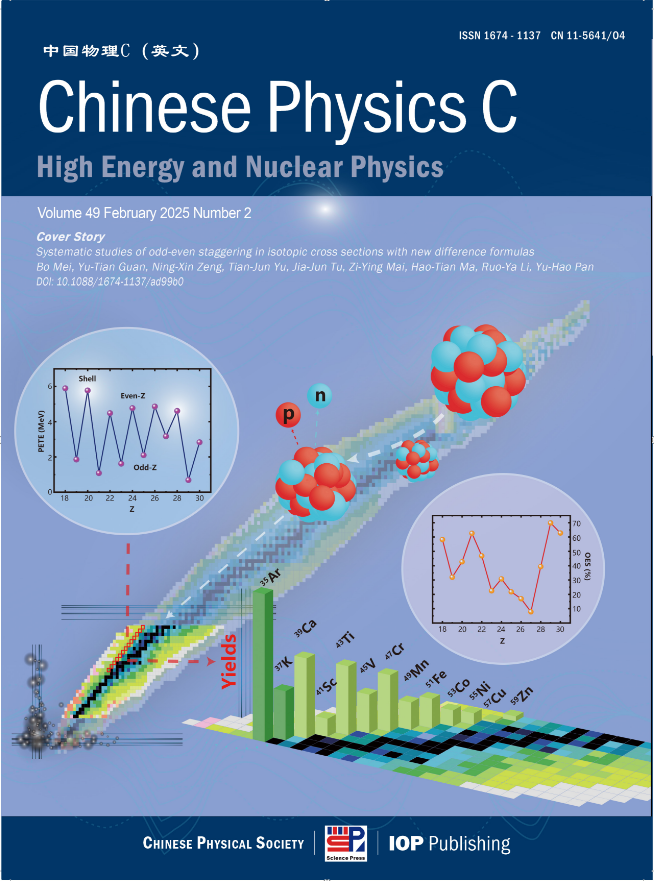Cover Story (Issue2, 2025) New difference formulas support auniversal odd-even staggering in isotopic production cross sections
Author: Bo Mei(Sun Yat-sen University, Zhuhai)
The production and measurement of new isotopes is one of the most important objectives in nuclear physics experiments. Fragmentation, spallation, and fission reactions at mediumenergies are most powerful methods used in these experiments. Reliable isotopiccross sections are required for optimizing these experiments, understanding the origin of the galactic cosmic-ray, and many applications.
Isotopic crosssections (or yields) measured in different reactions show an evident odd-even staggering (OES), namely, an enhanced production of even-Z isotopes with respect to the neighboring odd-Z ones. In previous studies, such as Ref.[1], a 3rd-order difference formula was often applied to quantify this OES, which seems to be almost universal for various reaction systems.
In a recent paper[2], three new formulas, the 2nd, 4th, and 5th-order difference formulas, have been proposed to study the OES in thousands of accurate cross sections measuredin different reactions over a wide energy range. The OES magnitudes extracted from three new difference formulas strongly support that the OES is almost universal for different reaction systems at various energies. This universal OES in isotopic cross sections seems to originate from the OES of the particle-emission threshold energy (PETE) in excited nuclei during the finalevaporation process, which is strongly affected by nuclear structure effects, e.g., pairing and closed shell. Future experiments at HIRFL and high-intensity facilities HIAF will provides new opportunities for accurate cross sections of unstable nuclei, especially those approaching the drip-lines. The universality of this OES as well as its origin and the impact of nuclear structure will be investigated by new experimental data approaching the drip-lines, where a strong OES and evolution of nuclear structure may be present. Finally, these new difference formulas can also be applied to study other quantities innuclear physics, e.g., the neutron- or proton-separation energies, charge radii, and fission yields, where the OES is also obvious.
References
[1] Bo Mei, Phys.Rev. C 100, (2019) 054619
[2] Bo Mei, Y. T.Guan, N. X. Zeng et al., Chin. Phys. C 49, (2025) 024105














